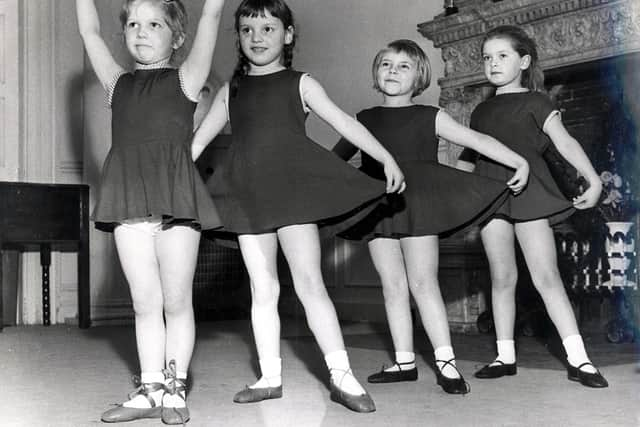'This lockdown has put a whole new look on hobbies'
and live on Freeview channel 276
Even the good old jigsaws have been dusted down from their places of storage. When I was growing up hobbies were all important. There were sayings of the day like ‘children should be seen and not heard’ together with ‘the devil makes work for idle hands!’
Bearing in mind that we had no television, no computers or mobile phones, it was important to keep busy. The most popular hobby was collecting things. It didn’t seem to matter what we collected as long as we did.
Advertisement
Hide AdAdvertisement
Hide AdStamp collecting was very popular. You could buy little packets of mixed stamps at the Post Office for a few pence and stick them in your album. They were usually a pretty unexciting selection, but you always hoped that a Penny Black would have slipped in. You soon accumulated albums of pretty useless and worthless stamps. However, it did educate you into the fact that there were places like Mongolia and Azerbaijan, even if you’d no idea where they were.


Football cards and football match programmes were usually collected by small boys but of little interest to my sister or myself.
The magazines we read gave us the chance to join clubs. There was the ‘I Spy Club’ where you collected books and badges although there was a certain limitation about what you could actually spy as a small child growing up in Sheffield when few families near us owned a car.
One of the pointless badges to collect was called ‘On the road’, with ‘Spotting wild animals’ also equally useless. We’d never even been to a zoo, let alone hope to see a wild animal walking through Firth Park. However, they were immensely popular with over half a million children belonging to the ‘I Spy Club’ in 1953.
Advertisement
Hide AdAdvertisement
Hide AdBuying the Enid Blyton Magazine gave us the chance to join the Busy Bees, whilst from Girl Magazine we had chance to become Girl Adventurers. Whilst they seemed very worthy, they weren’t something that would seem to be of much use.
More accessible was the Gloops Club to which every self-respecting child in Sheffield belonged. Originally the motto for the club was ‘Thmile’ but it was changed to ‘Smile’ when some parents complained that it would make their children short tongued.
The Gloops cartoon ran in the Sheffield Star newspaper and was coordinated by Aunty Edith, a popular columnist. Sometimes there were colouring competitions. You could acquire a badge and membership card by filling in the form in ‘The Star’. The whole purpose of being a Glooper was to encourage you to do good deeds just like Gloops who was a large, friendly, black and white cat. He was very much in demand at galas and other social events, always accompanied by Auntie Edith.
The Gloops Club was an organization which did a lot for charity. In the 1930s there were holiday villages in Skegness and Mablethorpe sponsored by the Gloops Club, also beds donated to local hospitals.
Advertisement
Hide AdAdvertisement
Hide AdMy sister and I had pen friends whose names were obtained from pen friend columns in magazines like ’School Friend’, and ‘Girls Crystal’. I wrote to Gunnar Magnusson who was an Icelandic fisher boy, Joyce Dear who lived in the West Indies, and Angela Smith who lived at ‘Whipsiderry’ Napoleon Avenue, Farnborough, Hampshire. Her address is firmly fixed into my mind even all these years later.
I can remember my father picking up the post from the mat and shouting to me ‘Monica,’ Whipsiderrys’ here!’
Her father was an architect who seemed to have designed a lot of properties in London and they were obviously very wealthy from the photos she sent to me of her house and grounds. I lived in fear that her father would ever visit Sheffield and bring her with him as I had rather embroidered the truth about the council house that I lived in. She probably thought I lived in something rather like Chatsworth House!
My sister also had pen friends and one of the most unusual was a girl who had exactly the same name as herself.
Advertisement
Hide AdAdvertisement
Hide AdMany of our neighbours children belonged to organizations like Guides and Brownies, Cubs and Scouts and Sea Cadets. All which helped to broaden rather limited horizons.
In 1958, Blue Peter started on BBC Television, and was one of the main influences in encouraging hobbies for children, although looking back at it there was a real sexist element about it at that time with activities for boys like woodwork, and cooking for girls. Blue Peter is still going strong today but with a considerably different format.
Many small girls decided that they would like to be a ballet dancer and I was no exception. This was fueled by my love of the Sadler’s Wells books written by Lorna Hill. My mother agreed that I could have lessons at the Fayre-Daviso School of Dancing, which was situated on Barnsley Road at Fir Vale in a large detached house. The Daviso part of it was Ninette Daviso, who had been christened Marie Antoinette Daviso and was of Portuguese heritage. Ninette was the partner of Zena Fayre who looked very like Nancy Spain – who was a television star of the time.
Alas my dreams of Sadler’s Wells became just that and after a few weeks I decided that Margot Fonteyn had nothing to worry about!
Stamp collecting was much easier!